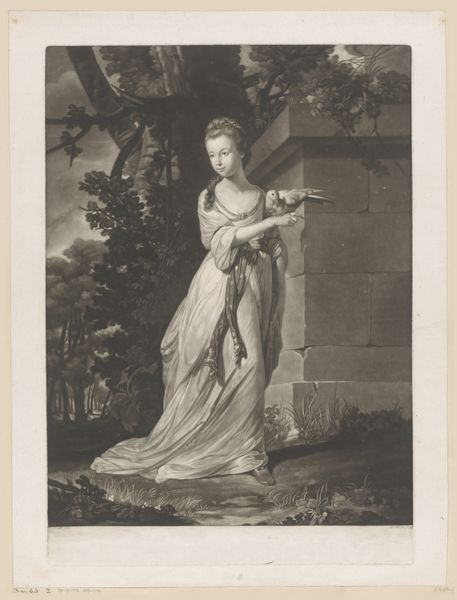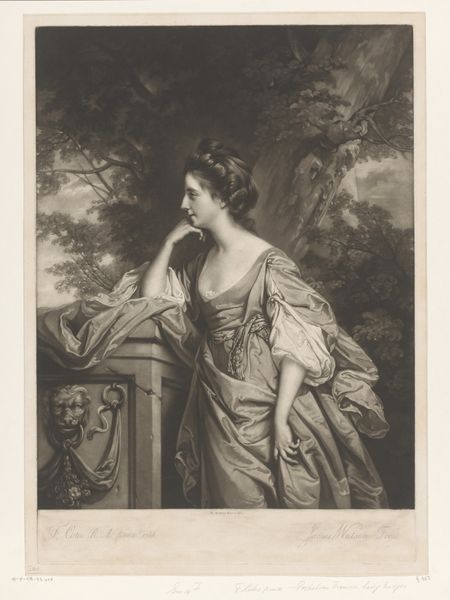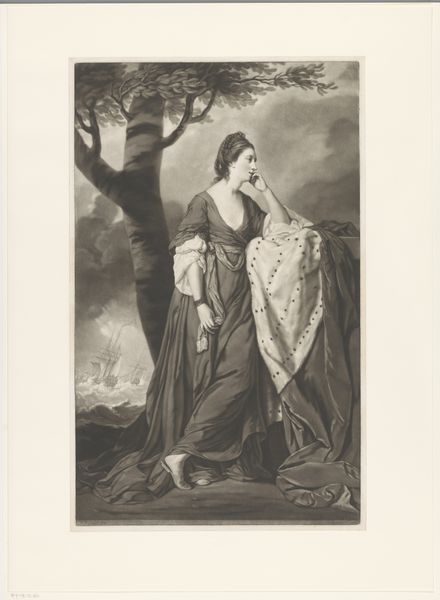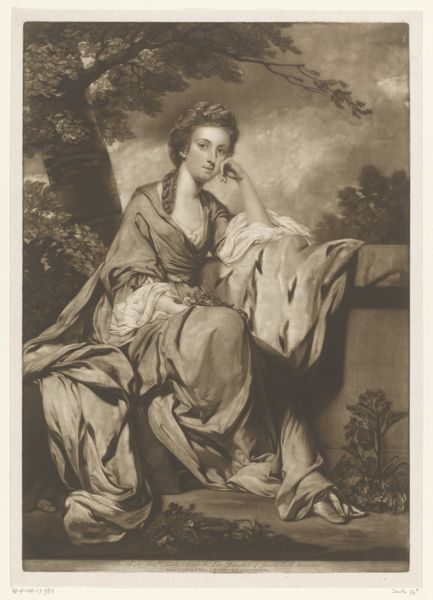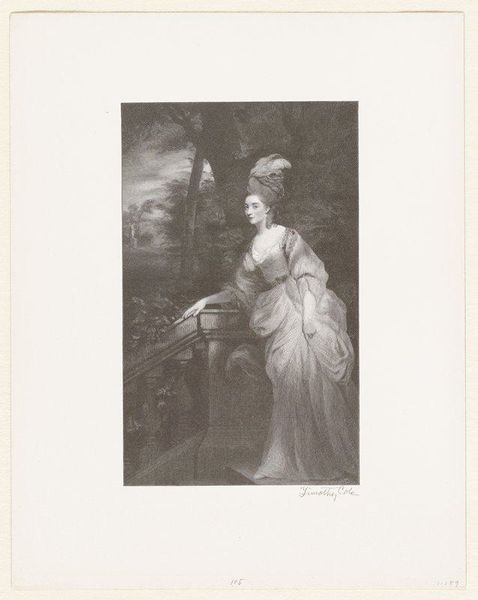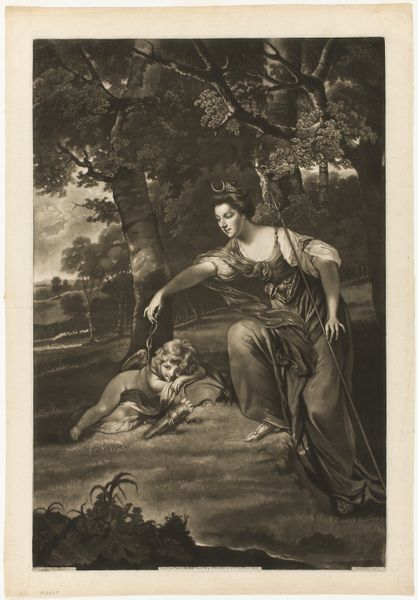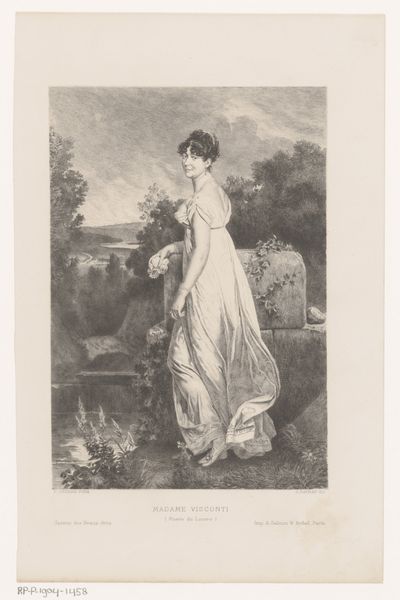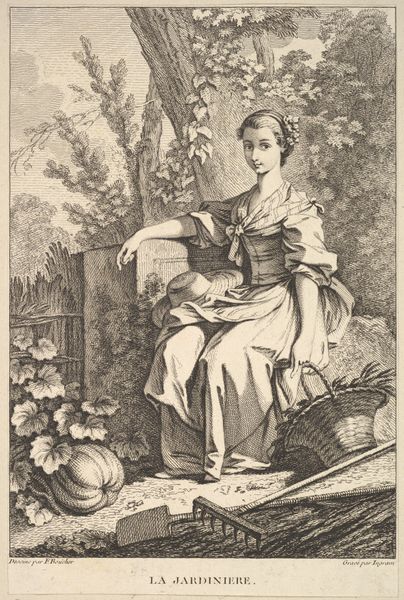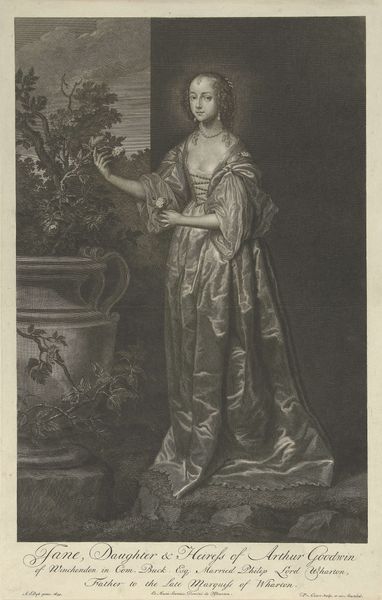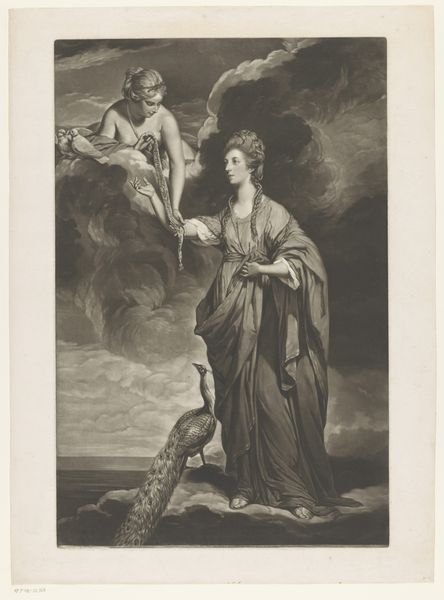
Dimensions: 599 × 378 mm (image); 638 × 379 mm (plate); 651 × 412 mm (sheet)
Copyright: Public Domain
Editor: Here we have "Catherine, Lady Bampfylde," a print from 1779 after a drawing by Thomas Watson, now hanging at the Art Institute of Chicago. She’s posing so elegantly, it's all very graceful, almost dreamlike, and the setting behind her looks theatrical. What do you see in this portrait? Curator: The way Lady Bampfylde is staged within this artificial landscape speaks volumes about the social role of portraiture in the late 18th century. These weren't just likenesses, they were carefully constructed images meant to convey status, taste, and morality. Do you notice anything about her pose in relation to the setting? Editor: She’s kind of perched, isn’t she? Not really part of the landscape, almost like she’s placed there… Curator: Precisely! The pastoral setting, combined with her fashionable attire, creates a dialogue about nature versus culture, and, of course, wealth. What do you think about the contrast between her elaborate dress and the natural scene behind her? How does that reflect the values of the time? Editor: I guess it highlights the importance of appearance and status for women in that era, it's as if their social role defined even their connection to nature. It all feels performative. Curator: Absolutely. Prints like this one made such images widely accessible. This contributes to how such concepts were disseminated, shaping public perception and, indeed, reinforcing social hierarchies. Think of the museum itself as an extension of these display spaces and these social values. Editor: So the image and its circulation helped to perpetuate a specific vision of class and gender. I hadn't really thought about prints working like that before, how their distribution can influence ideas on such a large scale. Curator: Exactly, and it's crucial to understand these works not just as pretty pictures, but as active participants in cultural and political life. Editor: That gives me a lot to think about – it is not just about the sitter; the image, and its availability as a print is as important, if not more.
Comments
No comments
Be the first to comment and join the conversation on the ultimate creative platform.
